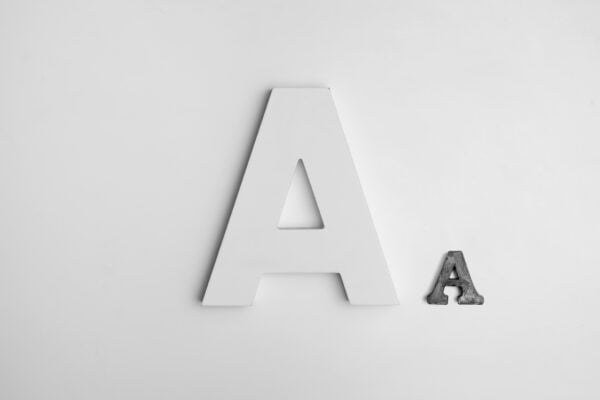How to Teach Your Child Long Vowel Sounds: Overcome the Struggles of Learning Vowel Sounds Now!
How to Teach Your Child Long Vowel Sounds: “Mommy, why does ‘rain’ sound different from ‘rake’?” Every parent knows that teaching their child long vowel sounds can be a challenging task. With the world of phonics constantly evolving and the rules changing, it’s hard to know where to start. Don’t worry, we have all the tips you need for teaching your child the long vowel sounds so that they can read more fluently and confidently.

Introduction
Long vowel sounds are an important part of learning to read. They are necessary for accurately pronouncing and understanding words, as well as for the development of a student’s reading fluency. Unfortunately, making long vowel sounds can be a challenge for young children, and many struggle to produce the correct sounds. Fortunately, with the right approach, parents and educators can help their children make long vowel sounds more easily and accurately.
In this article, we’ll look at some of the most common problems kids have when they try to learn long vowel sounds and give some good advice on how to deal with them. We’ll discuss examples of long vowel sounds, the rules for making them, and activities and resources that can be used to help your child learn and practice long vowel sounds. With these strategies, you should have no trouble teaching your child these essential skills.
Let’s begin by exploring the common struggles that come with learning long vowel sounds.
Common Struggles with Learning Long Vowel Sounds
Many parents and children struggle with understanding and mastering long vowel sounds. While short vowel sounds are quite straightforward, long vowel sounds often pose a challenge to young kids who are just learning phonics. Long vowel sounds can be confusing for young children to grasp, as they are not as obvious as short vowel sounds and sometimes have multiple pronunciations depending on where they appear in a word. This can lead to mispronunciation of words, both written and spoken, leading to confusion and misunderstanding.
Young students often struggle with identifying long vowels in words and context; this can cause them to make mistakes when reading or spelling out words, even if they know the correct spelling of the word itself. Additionally, some children find it difficult to differentiate between similar-sounding long vowels, such as “ea” and “ee”. It can also be difficult for them to distinguish between words that sound alike but have different spellings due to the presence of a long vowel sound (e.g., “bear” and “beer”).
These problems can be discouraging for parents who aren’t sure they can teach their child how to learn and recognize long vowel sounds. Unfortunately, there isn’t always an easy answer or method for teaching these skills. To make matters worse, some children tend to rely on memorizing words rather than understanding the difference between each sound; while this may work in some cases, it’s important that they truly come to understand each sound so they can apply this knowledge to other words with similar phonetic patterns.
Still, with the help of their parents, children can learn how to make long vowel sounds and use them naturally in their speech and writing. With time and patience, your child will be able to recognize each distinct sound that makes up a word and develop their pronunciation skills so that others will understand what they are saying!
Understanding and Using Long Vowel Sounds
Understanding the concept of long vowel sounds is essential for proper pronunciation. Explaining what they are and why they are important should be your first step when teaching your child how to make long vowel sounds. Show them that different letters create different sounds, and some letters produce two or more sounds depending on their size (long or short).
However, it’s not enough to just recognize the difference between short and long vowels. You must also teach your child how to identify these different sounds. This means that they should be able to distinguish between short and long vowels when they hear them and be able to produce them when speaking. To do this, you can use repetition and proper intonation to help your child better understand the differences. Additionally, making a chart of the different vowels and having your child repeat each word with you will make it easier for them to remember and distinguish between short and long vowels.
Moreover, role-playing is another great way to help your child understand how to use long vowel sounds in context. This involves creating scenarios where you and your child take turns acting out different characters or situations as if it were a play or a skit while using the correct intonation with long vowel sounds. Doing this helps children become comfortable using these sounds in conversation instead of just reading aloud words from a list.
Finally, when practicing with your child on using long vowel sounds correctly, always give positive feedback when they get the right sound, but also provide constructive criticism if they make mistakes so they can learn from it and correct themselves in the future. Doing this will give your child more confidence in their ability to use these sounds correctly when speaking.
Examples of Long Vowel Sounds
Long vowel sounds can be divided into two categories: diphthongs and monophthongs. The most common long vowel sounds are /i:/ (eee) and /u:/ (ooo).
Other common long vowel sounds include /ɑ:/ (ahh), /e/(eh), and /oʊ/(oh).
A few examples of words that have long vowel sounds in them are “bee”, “tape”, “meat”, “boat”, and “rope”.
A diphthong is a combination of two vowel sounds that together create one sound. “Bee” is a diphthong because it combines the sound of the long “i” with the sound of the short “e”. Similarly, “boat” combines the long “o” sound with the short “a” sound.
Monophthongs are single units of sound, or phonemes, that don’t change in quality or how they’re made. Examples include words like “seat”, which has the sound of a long “e”, and “toy”, which has the sound of a long “o”.
By providing examples like these to your child, they can begin to understand what makes a vowel sound long or short.
They can then practice pronouncing these words correctly by saying them slowly and carefully. As they become more familiar with the differences between long and short vowels, they can start practicing longer words and sentences that require them to use both short and long sounds.
It is important to remember that we all learn differently, so what may work for one student might not necessarily work for another. As your child learns these new sounds, it’s important to be patient and give them lots of praise. Your child will soon be able to recognize long vowel sounds and use them correctly in their speech with some practice and help.
Long Vowel Rules
Long vowel rules help children learn how to read and write words correctly. The rules are also essential for developing a basic understanding of spelling and pronunciation. There are three main rules for long vowels.
The first rule is that a word with a long vowel sound has two vowels in a row, usually referred to as the “double-vowel” rule.
The second rule is the “silent e” rule, which states that when the letter “e” is found at the end of a word, it will be silent but will indicate that the previous vowel is long. For example, in the word “cake”, the “e” remains silent but indicates that the “a” is a long vowel sound.
The third rule is that certain letter combinations can produce a long vowel sound. For example, “ea”, as in “heat” or “ie”, as in “pie”.
Teaching the rules of long vowels can help your child master this concept. A helpful way to do this is to provide examples and explanations of these rules using language your child is familiar with and understands easily. You can also use visual aids such as pictures or diagrams to show your child how the different sounds are produced.
You can also make games or puzzles like matching games or word searches to help your child learn to recognize long vowels and words with these patterns.
Examples can be used to help your child understand long vowel rules easily. Examples such as “boat” (two vowels in a row) or “cake” (silent-e) will be easier for children to remember than abstract rules. You can also provide examples of words with multiple consonants following a long vowel like “honest” (hon + est) and ask your child to identify them by breaking down each part of the word into smaller pieces. This technique will help build their confidence and increase their understanding of phonics.

Here are the five vowel sounds in the English language, along with examples of words that use the long sound of each vowel:
- Long A: Pronounced like the “ay” or “ey” sound, as in the word “cake” or “rain.”
- Long E: Pronounced like the “ee” sound, as in the word “meet” or “beet.”
- Long I: Pronounced like the “eye” sound, as in the word “time” or “line.”
- Long O: Pronounced like the “oh” sound, as in the word “go” or “toe.”
- Long U: Pronounced like the “you” sound, as in the word “cute” or “tube.”
One way to remember the long vowel sounds is by using the mnemonic device “A, E, I, O, U… the vowels say their own name.”
It’s important to note that there are many exceptions to the rules for long vowel sounds in English. Some words have silent letters or unusual pronunciation patterns, so it’s always a good idea to consult a dictionary or ask a teacher or tutor if you’re not sure about a particular word.
Activities and Resources for Long Vowel Sounds
Learning about long vowel sounds can be a difficult process for kids, but there are several activities and resources that parents can use to help their child learn how to identify and use them. Teaching long vowel sounds through interactive activities is one way to make learning easier and more enjoyable. Games that involve spelling words with long vowels or coming up with words using specific long vowels can help your child understand how to use these sounds in spoken and written language. Also, if they use the words they’ve learned in conversations or while playing, they are more likely to remember them.
Reading books with words containing long vowels is another great way to teach your child about these types of sounds. You can practice sounding out the words or breaking them apart syllable-by-syllable so they can hear the sound of each letter in the word. This helps give them an understanding of phonemic awareness.
Using flashcards or worksheets that help with phonics is another way to practice recognizing and using long vowel sounds. These materials can help your child understand the difference between short and long vowels and give them examples of how different letters work together within a word. It also gives visual cues that may make it easier for them to remember certain rules related to the topic.
In order to help your child recall what they’ve learned about long vowels, you should make it fun! Puzzles where they have to match pictures with words containing a particular type of sound or singing songs that contain these words are great ways to do this.
Additionally, you can create games like mazes or crossword puzzles that require students to spell out words with long vowel sounds correctly or draw pictures of objects using those same words. When learning is fun and interesting, it’s easier for students to remember what they’ve learned and works as a reinforcement tool for young learners.
Overall, there are many activities and resources available that can help your child learn how to identify and use long vowel sounds. From interactive activities to phonics worksheets, there are plenty of ways to make learning more fun and engaging while at the same time helping them become more familiar with the concept. By doing these activities with your child on a regular basis, they will learn how long vowel sounds work in a way that will stay with them for the rest of their lives.
Conclusion
Learning long vowel sounds can be challenging for both parents and children. However, these skills are essential for children’s reading and writing development. With the right amount of patience and guidance, it is possible to make learning long vowels a fun and enjoyable experience.
Your child will soon be able to recognize and say the right long vowel sounds if he or she practices and hears them often enough. The key is helping your child understand the rules behind how the long vowels work. You can do this by using activities or resources that are tailored to the needs of your child. Additionally, you can provide them with examples of how to use the long vowels in different contexts.
All in all, teaching your child how to make long vowel sounds is an important step in helping them become successful readers and writers. With the right resources, activities, and guidance, your child will be able to master long vowels and improve their overall reading skills.
Learning long vowel sounds can be difficult for both kids and parents, but with the right resources and activities, it can be a fun and rewarding process. By understanding the common problems and following the rules for long vowels, our children can learn how to say and write long vowels correctly. With the right activities, resources, and some practice, your child will soon be confidently making all of the long vowel sounds in no time.



